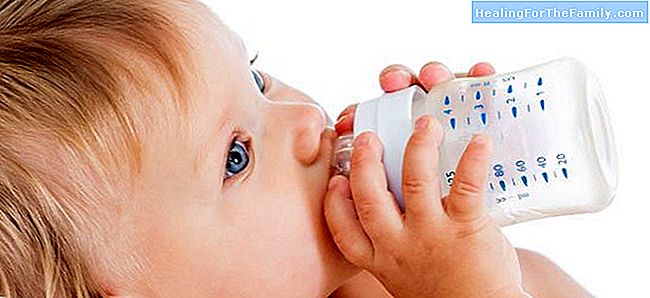When the baby does not tolerate milk
Cow's milk protein allergy (APLV) is a reaction of hypersensitivity of the immune system to a food antigen (protein), in this case, the protein of cow's milk (PLV). It should be differentiated from lactose intolerance, which occurs when there is a deficit in an enzyme called lactase. Babies' allergy
Cow's milk protein allergy (APLV) is a reaction of hypersensitivity of the immune system to a food antigen (protein), in this case, the protein of cow's milk (PLV).
It should be differentiated from lactose intolerance, which occurs when there is a deficit in an enzyme called lactase.
Babies' allergy to milk protein

Children with this type of allergy, react to one or more milk proteins. Beta-lactoglobulin is a serum protein totally foreign to the human species since it does not exist in breast milk. Therefore, it is a very allergenic protein, which, when there is an early contact of the infant with cow's milk (cases of feeding with artificial formula or early introduction of milk in your diet), is being introduced at the time it is They are establishing the mechanisms of immunological tolerance, and this may contribute to the appearance of the APLV.
What to do if the baby is allergic to milk protein
Babies or children affected by this allergy, as well as mothers of breastfed infants suffering from APLV, must follow a protein-free diet of cow's milk. In addition to food, some cosmetics, lotions and medicines contain PLV in their composition, so they should also be avoided.
Trace quantities of PLV can be found in foods that originally do not contain it, as a consequence of industrial contamination, due to joint manufacture with other foods, or in the same manufacturing chain. For this reason leer it is very important to read all the labelsif you follow a diet free of PLV, control industrial products as much as possible, and avoid everything that you do not have complete and reliable composition information. In addition, it is convenient to know the composition of the additives, since some of the employees in the food industry come from milk. Lactose, in principle, does not cause a reaction of the immune system, but it can be accompanied by proteins that sometimes can not be eliminated in the purification processes and these can trigger reactions, especially in individuals with very high sensitivity.
Feeding for children with milk protein allergy
The options available to feed a non-breastfed infant with APLV are several:
hydrolyzed milk (hypoallergenic), amino acid-based formulas and those obtained from soy proteins The latter is not recommended before 6 months of age according to several associations of pediatricians, so it is advisable to confirm with the specialist or make a clinical tolerance test, since the cross-reactivity between PLV and soy protein is observed in 70 -80% of cases.Goat and sheep milk are not advisable, either, since their proteins are very similar to those of cow's milk and can cause cross reactions in more than 75% of cases.
After 12 months, the milk protein of the cow can be re-introduced, although the specialist will make the recommendations. In some cases, and depending on the severity of each case, it may be advisable to exclude other potentially allergenic foods from the diet, such as nuts, soy, eggs and fish / shellfish until at least this age. prevent other possible food allergies.
As a positive note, according to current research, about 80% of children with APLV overcome this allergy at around 2 years, and only 10% maintain it until adulthood.












